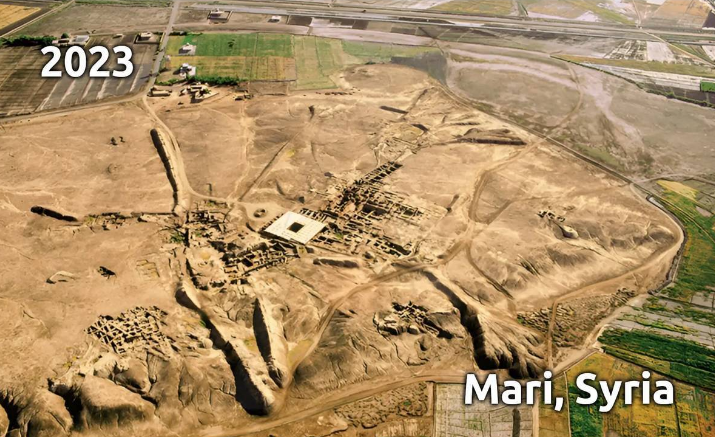The ancient city of Mari stands as a testament to the grandeur and sophistication of early civilizations. Established around 2900 BC, this Semitic Amorite city thrived in ancient Syria, leaving behind a rich legacy that continues to fascinate historians and archaeologists. Below, we explore Mari’s historical significance, cultural achievements, and enduring impact on human history.
The Historical Foundations of Mari
Mari’s Emergence and Prosperity
Mari was founded around 2900 BC and rose to prominence as part of the broader Amorite civilization. Positioned as a vital kingdom and cultural hub, the city thrived until 1759 BC, during which it played a pivotal role in shaping the history of the region.

Strategic Location Along the Euphrates
The city’s location on the Euphrates River was instrumental in its success. Situated approximately 120 kilometers southeast of Deir ez-Zor and 11 kilometers northwest of Albukamal, Mari became a key intermediary for trade routes connecting the Ebla civilization to the west and Sumer to the south. This central position enabled the exchange of goods, culture, and ideas, fostering its growth as a commercial and cultural center.
Mari’s Cultural and Intellectual Achievements
The World’s Oldest Library
One of Mari’s most extraordinary contributions to human civilization is the discovery of the world’s oldest known library. This treasure trove of cuneiform tablets provides valuable insights into ancient administration, literature, law, and commerce. These documents not only highlight Mari’s intellectual sophistication but also serve as an essential resource for understanding early human history.

Artistic and Architectural Excellence
Mari’s archaeological remains reveal impressive architectural and artistic achievements. From grand palaces to intricate artifacts, the city’s craftsmanship reflects its cultural richness and the advanced skills of its inhabitants. These elements underscore Mari’s position as a center of innovation and creativity.
Mari’s Enduring Legacy
Insights from Archaeological Discoveries
The remnants of Mari, preserved within a hill near the Euphrates, provide a fascinating window into its historical grandeur. Archaeological excavations continue to unveil details about its governance, trade, and societal structure, offering a deeper understanding of ancient Near Eastern civilizations.
Mari’s Role in Human History
Mari’s significance as a commercial hub and cultural nexus left an indelible mark on history. Its contributions to trade, intellectual development, and cultural exchange resonate as a reminder of the complexity and interconnectedness of ancient societies.

Conclusion
The ancient city of Mari remains a beacon of historical and cultural significance. From its role as a trade intermediary to the preservation of knowledge through its library, Mari’s legacy is a testament to the ingenuity and achievements of early civilizations. Today, its ruins along the Euphrates River continue to captivate and inspire, shedding light on the intricate tapestry of human history.


CÁC TIN KHÁC
Mary Walton: The Forgotten Inventor Who Helped Clean Up America’s Cities
Tomb of Queen Nefertari in the Valley of the Queens, Egypt
Discover the Hypostyle Hall of the Temple of Hathor at Dendera
Venus de Losange: Unveiling the Mystery of a 20,000-Year-Old Paleolithic Icon